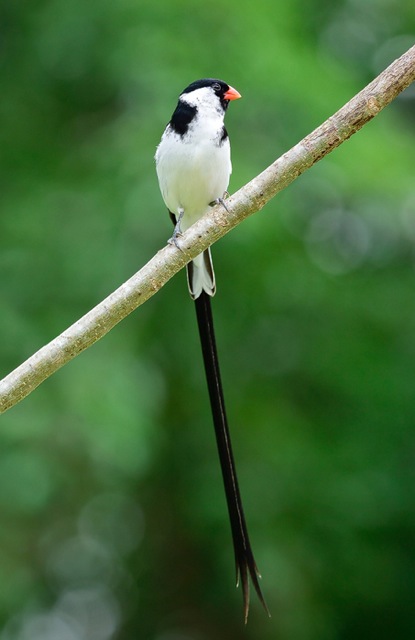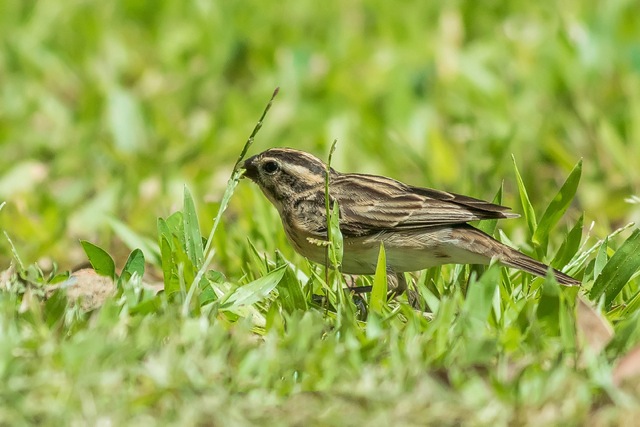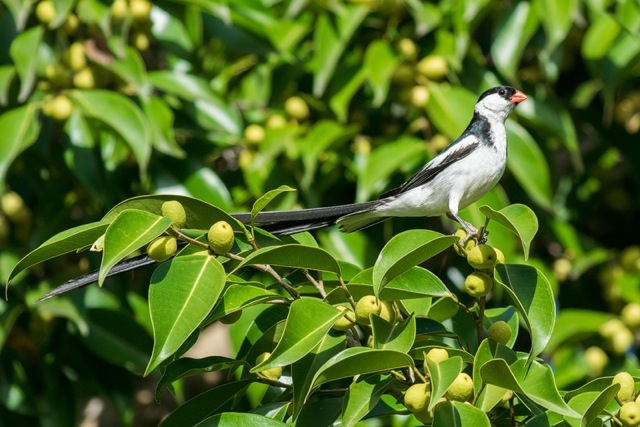Science is all around you: Dimorphism in birds
Submitted by Greetchen Díaz-Muñoz on
José: "Greetchen, did you know that there are species of birds that change their physical appearance during their reproductive stage?"
Greetchen: "Sure! It is similar to what we do when we are seeking someone else’s attention... We just put on our best clothes!
José: "Well, this month we have some great photos that show both, male and female Pin-tailed Whydah. This is an introduced bird, natural from Africa.
Greetchen: "I see that they look very different."
 Male appereance during the reproduction stage. Photo: José Almodóvar
Male appereance during the reproduction stage. Photo: José Almodóvar

Female Pin-tailed Whydah. Photo: José Almodóvar
José: “Yes, what happens is that you are seeing them in their reproductive stage, during which the sexual dimorphism is very evident. Sexual dimorphism refers to differentiation in the external appearance (shape, color or size) between males and females of the same species.
Greetchen: "How is this manifested in the case of the Pin-tailed Whydah?"
José: "During the non-reproductive phase, both male and female are brown with white and black lines on their bodies. But in the reproductive stage, the male colors switch to black and white, and he grows a long black tail, approximately 12 cm long. Males like to show off their long tails to females, while singing. It's some show!"
Greetchen: “José, sexual dimorphism is more common than what we would think. In some species, it is much more obvious than in others; but interestingly, it is present in most species of the animal kingdom."
José: "That's right. In this species it is known as seasonal dimorphism, because while the male and female plumages are very different during the breeding season, they are similar in both sexes during the winter (non-breeding) season."
Greetchen: "Clearly, females will feel more attracted to males with more colorful or flashy plumage."
José: "I've been watching them for a few years. The Pin-tailed Whydah is quite common, and it likes to perch on wires and fences. It is so interesting how the male plumage changes so drastically, and how he sings and flies to the female to get her attention."
Dr. Carlos Muñoz (RUM) colaborated in the edition of this entry. I you enjoyed these images, click “Like” and share them with everybody. You may follow Greetchen (@GreetDiaz) and José (@titovolky) inn Twitter. Want to know more? Here are related resources:









